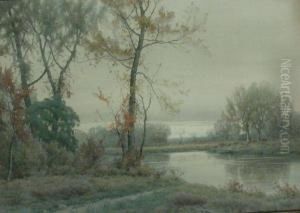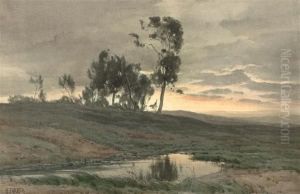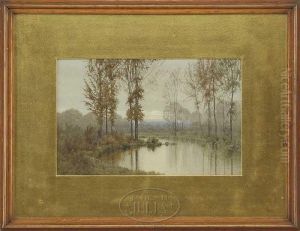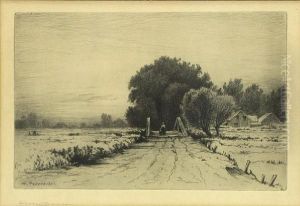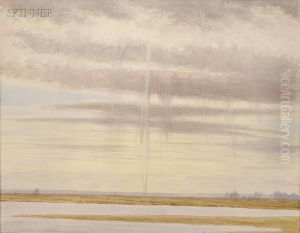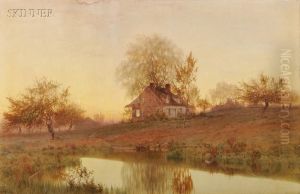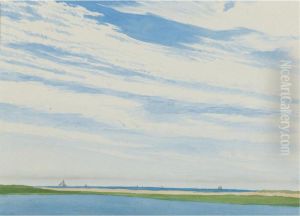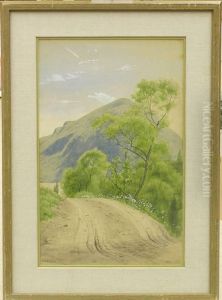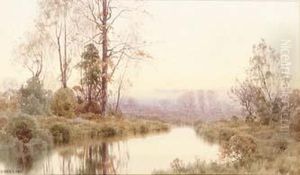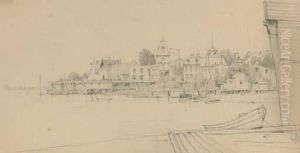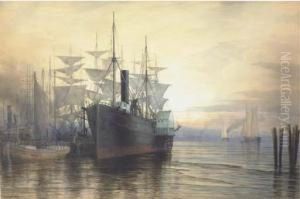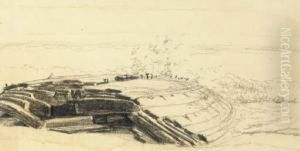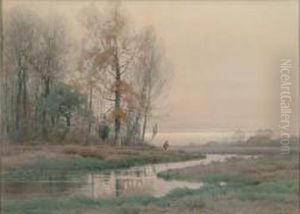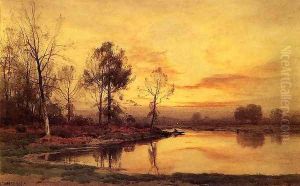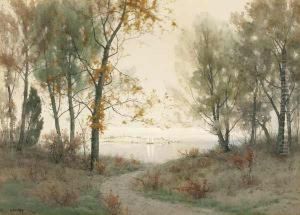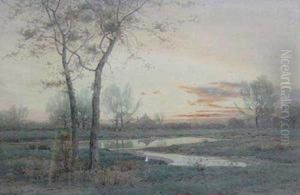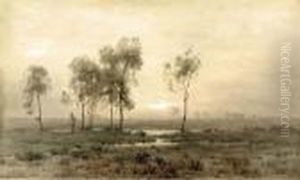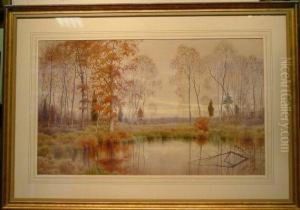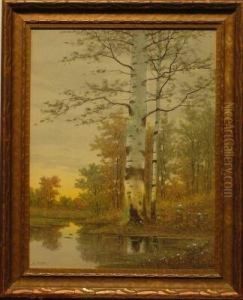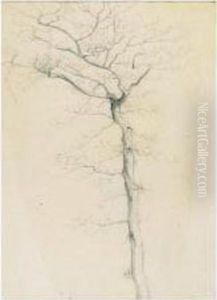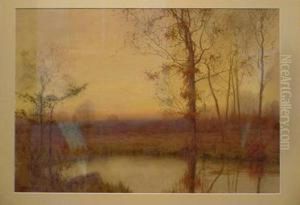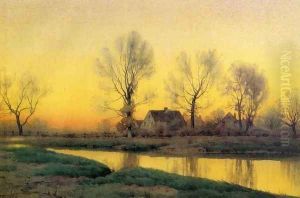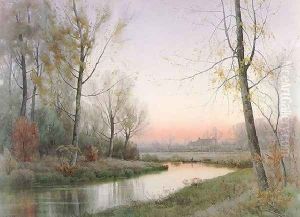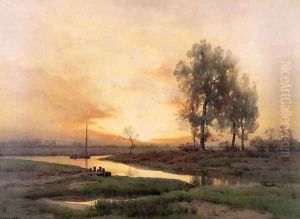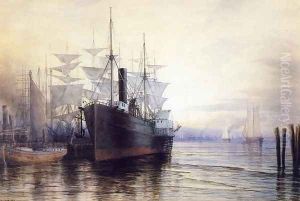Henry Farrer Paintings
Henry Farrer was an English-born American artist known for his tonalist watercolor landscapes and etchings. He was born in London, England, on March 23, 1844, and emigrated to America with his family in 1850, settling in Brooklyn, New York. His brother, Thomas Charles Farrer, was also an artist and a pupil of the Pre-Raphaelite painter John Ruskin, which likely influenced Henry's early artistic development.
Farrer did not receive formal art education; instead, he learned through apprenticeship and practice. He initially worked in a mapmaking firm but eventually turned to painting full-time. Farrer's early works were primarily in watercolor, and he became a founding member of the American Society of Painters in Water Colors in 1866.
Throughout the 1860s and 1870s, Farrer's style evolved, and he became increasingly interested in the tonalist movement, which emphasized atmosphere and mood over precise representation, often using a limited color palette to create harmonious and contemplative landscapes. The tonalist aesthetic deeply influenced American art of the late 19th century, and Farrer's work is considered a key example of this style.
Farrer was also an accomplished etcher, and in 1877, he became one of the founding members of the New York Etching Club, which aimed to promote etching as a fine art rather than just a printmaking technique. His etchings, like his paintings, often featured landscapes and were characterized by their delicate lines and attention to atmospheric effects.
Despite his contributions to the tonalist movement and American watercolor painting, Farrer's work was somewhat overshadowed by that of his contemporaries, such as James Abbott McNeill Whistler and Winslow Homer. Nevertheless, he exhibited widely during his lifetime, including at the National Academy of Design and the Brooklyn Art Association.
Henry Farrer passed away on January 24, 1903, in New York City. Today, his work is included in the collections of various museums, and he is recognized for his role in shaping American landscape painting and for his mastery of the watercolor medium.
